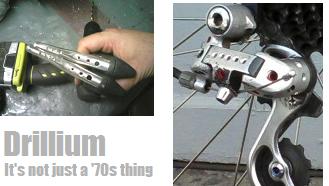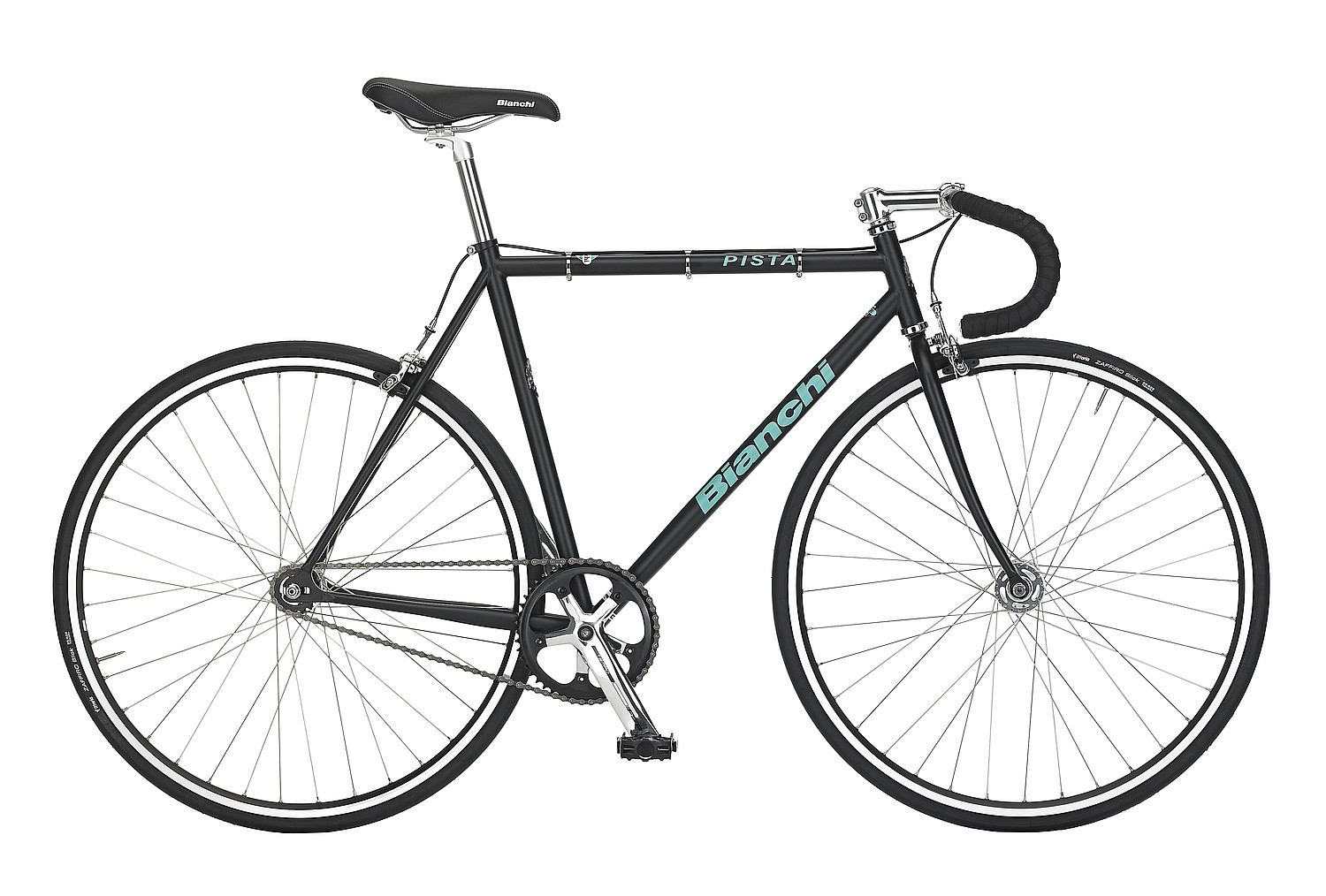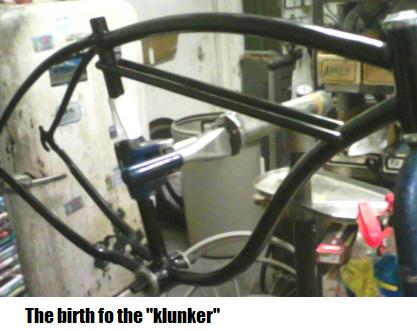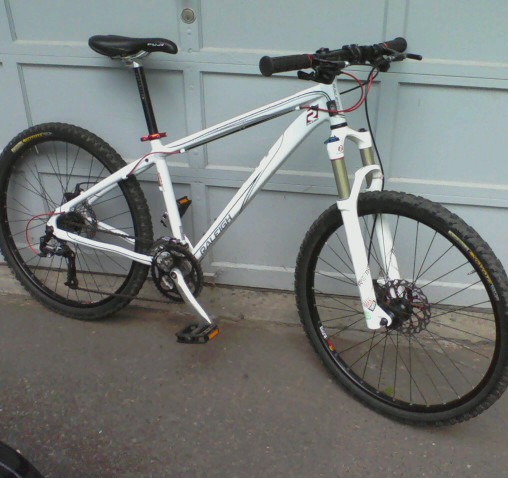NYC accident should prompt reconsideration of safety, not anti-biker Blitzkrieg
A recent crash in Central Park where a woman was hit by a bicyclist should be prompting people to reconsider issues of road safety and the importance of being aware of your surroundings.
Instead it has prompted a rash of "anti cycling" ranting from the media, which, to paraphrase an old line, is full of sound and fury -- and signifies nothing.
In typical ignorant fashion one NY Post article on Sept 22, 2014 said that "Witnesses said Marshall was speeding down West Drive and tried to swerve around Tarlov, rather than brake just moments before he careened into Tarlov on his $4,000 Jamis Eclipse bike".
Let's examine this statement. According to witnesses, he was going fast. What happens on a bike if you try to slam on your brakes? You lose control, and crash. Safe riders ALWAYS try to dodge or engage in other evasive action. At cruising speed, slamming on your brakes is a guarantee of an accident -- for you, or the other party -- unless you are extremely lucky.
As to the bike, whoc ares how much it cost? Would a cheaper bike have done less damage to the pedestrian -- who has since died from her injuries?
The woman, the wife of a CBS executive, was crossing the street and was hit by a cyclist. Media coverage has been extremely negative, with one newspaper even basically saying, who is this guy on the fancy roadbike to be using our streets. However, while no one knows the entire story, or maybe ever will, the people who were actually there have more facts in hand than random reporters. In this case, from what I heard, the bicycle rider, an experienced cyclist and accomplished musician, was riding safely and then forced out of the "bike lane" by a crowd of pedestrians blocking it.
A woman then jumped into his path -- and he couldn't stop in time.
He did however have the presence of mind to try and shout a warning -- which either wasn't heard or heeded. Of course, the media turning this into another "evil" of "cycling", as if he was shouting at her to look out because he was rude. No, he was shouting at her to look out because he didn't want to hit her!
What happened? Why did this woman step in front of a moving vehicle?
Most avid cyclists have had plenty of experience with careless or clueless people stepping in front of them. I myself have nearly killed several of these flying squirrels -- avoiding them only by dumb luck and some degree of learned skill.
It may be that in this case the pedestrian didn't see the bike because there was a large group of other pedestrians blocking the side of the road. If she was crossing from that side she may not have seen him because of the angles. Or maybe she didn't look. Or maybe she looked -- but only in the "bike lane" the cyclist had to pull out of to dodge other pedestrians.
Or maybe she just figured somehow he could stop -- a fatal mistake and one that would mean she caused the crash, not the rider.
It is not unusual for riders to have near misses with careless and clueless pedestrains. While fatal or near fatal crashes are less common, they do happen. And cometimes they are even the fault (at least partly) of the cyclist. In one famous case a few years ago, a cyclist was riding the wrong way down a street and a pedestrian was crossing; they hit, the man later died. However, cyclist culpability is such run-ins is rare. And few avid cyclists go the wrong way down a street.
Some have argued leaving the bike lane on this stretch of street is illegal. if that's so, it shouldn't be; cyclists have a longstanding legal right to the street that predates bike lanes. And not only is such a traffic law patently absurd -- when a bike lane is blocked, it can cause havoc. For example, if people thinkt hat on that section of street the bikes aren't allowed anywhere except in the bike lane, they probably won't be looking for them there -- another potential contributor to the accident. This is the danger of "the convention of seperation" caused by bike paths and bike lanes, without also adequate understand of road use; merely by its existence the infrastructure teaches people -- unless they are taught otherwise -- that bicycles won't mix with other traffic. ultimately this leads to les safe roads and more confrontation, not less, and drivers become increasingly intolerant of cyclists on regular roadways, and both drivers and pedestrians stop looking for cyclists, figuring they no longer have to
so the fact that the cyclist may have left the bike lane "illegally" -- accordign to the Post -- means nothing -- except, perhaps, it is time that traffic law is revisited. Blockign the bike lane is supoposed to be punsiehd by a fine -- why doesn't the Post talk about THAT rule? Oh, because hten it would have to admit he left he bike lane only to AVOID AN ACCIDENT -- and was then later the subject of another one when someone crossed in front of him.
According to a regular at the local bike shop, who knows the New York rider involved, he was a careful cyclist who would not have carelssly crashed into anyone. Also, apparently, the bike lanes in Central Park are often taken over by foot traffic, who then force the cyclists to dodge them like obstacles, as happened in this case.
While there are some careless cyclists, just like there are careless drivers, pedestrians, and for all I know, careless boat captains, what amazes me is how anytime there is a cyclist-pedestrian crash, the assumption is that it is the cyclist's fault. Has no one ever heard the phrase "look both ways"? We teach this to kids but forget it as adults. On virtually every street in the union, you see pedestrians just launch themselves into traffic. Most don't even stop before enterign the roadway; few bother to look. many are distracted; others cross against "don't walk" signs and many step in front of vehicles -- including bicyclists. While no one knows if that's what happened in this case, it seems the cyclist was operating as safe as he could around people who were not (namely the peds blocking the bike lane). Again, he dodged the obstruction in the bike lane, and when someone stepped into his path, he called out a warning ans swerved, rather than panicked and hit his brakes. This is everything anyone could do to avoid a crash in that situation. The only person who could have done anything else is the woman who got hit; she could have stopped walking and waited until traffic (yes a bike is traffic() passed before she crossed the street. Why she didn't we may never know.
But people need to take a step back and examine the facts. If the cyclist was riding safely, then maybe the issue is something else. in this case, it could very well be a carelss pedestrian who stepped in front of a moving vehicle -- and paid the price. But that would require people to reaxamine their own attitudes and behaviors, which is too much to ask for many. instead, they blame the cyclists. This is easier for them, but it doesn't bring us any closer to the truth -- or a solution to this problem.
The very fact that the media has had to resort to snide remarks about how expensive the bike is, or miscatagorize the riders actions -- dodging, shouting a warning, swerving -- says there is nothing there. The press is an emporer with no clothes on this one.
Heck, they even went on a rant about how the rider uses a GPS to track his speed and mileage -- as if that's something new. Almost every avid rider tracks this somehow. As to the fairly fast speeds mentioned by the post, so what? I once got pulled over by a cop for doing 43 in a 25 on my bike, but that doesn't mean I'm going to be going 43 mph through downtown or whenever. To quote the max speed the guy tracked on his GPS says nothing about how fast he was going at the time, beyond that it could have been fairly quick because he had the skill and fitness to do so. And speed and bikes is a funny thing; as the GPS mentioend illustrates, speedometers aren't standard bike equipment. So how can you tell if you are speeding if you don't have one? In my case I had a digital speedometer back when I clocked my 43mhp, but it was at night, So I couldn't see the speedometer. In such a case, or if you don't have such a device, the only way to tell speed is by feel -- did I feel in control? As an avid rider the answer was yes, so I didn't realize I was going so fast.
And that's the other irony; by trying to bash this cyclist all the media has done is illustrate he is an experienced rider not likely to make a horrible mistake. If he nromally rides fast, he knows how to handle himself and bike. If he normally rides a lot, he's used to handling various situations. Etc. What's more likely -- that an avid experienced rider simply plowed into a woman with his eyes closed? Or that, maybe, something else caused the accident?
Grant that, sad as her iunjury and later death was, it might even have been the actions of the other party, who like many people was probably not also a cyclist, and therefore night not have looked for bikes, might not have noticed a bike, or might have misjudged it's speed?
For that matter, instead of bashing cyclists, how about an expose of the pedestrians who block the bike lane? How about rexamining the convention of seperation that bike lanes can create, and the danger it can lead to, if they are not accompanied by some reaffirmation that yes, you are still going to have to be aware and look for bikes, they are still part of traffic? Perhaps one could reaxamine those foolish and probably illegal tickets for leaving the bike lane, a stricture that is implemented in spite of every known traffic safety principle, probably just to mollify ignorant and impatient drivers? Maybe even examine the issue of bike lanes themselves, that if they come with all this negative baggage, they are not a worth while trade off for riders? Or a newspaper article on all the people killed by car drivers on cell phones?
How about this: acknowledge that the road is a potentially dangerous dynamic of moving variables, some at high speed, and exercise the amount of awareness of your surroundings as you think your own life is worth. Oh, and ticket malefactors who are careless (this would include all those careless pedestrians who enter traffic at the last minute no doubt thinking they are immune from physics).
But most importantly, don't blame the victim of careless conduct. And yes, if the bicyclist was caused to crash by a careless pedestrian, then he was the victim of her misconduct, not the other way around. It is very sad this woman was injured. But blaming an innocent person who was involved in an accident is no help.
Also, in the "big picture", where is the media's priorities? Drivers in cars kill 40,000 people a year, mostly in prventable accidents due to operator error -- in other words, some carelessness or mistake. Which works out to 109 per day, average. But you don't see "anti-car" crusades like you see people arguing we should go after bicyclists. And what you see even less of is any attempt to crack down on careless pedestrians who jump out into the street like lemmings. How about those hundred dollar tickets for blockign bike lanes?
I don't know if that is the case here. But I certainly know there are enough doubts the cyclist did anything wrong that the media should stop focusing on blaming avid, skilled cyclists and start talking about the clueless and inept who flood our streets, in whatever form they take, pedestrian, driver, rider.
After all, lives could depend on it.

 !
!

 Shakespeare's immortal quote about what to do with lawyers is perhaps more timely now than ever before. Everyone has them, like it or not, and they -- and the other lawyers, who work for the government, and make the laws they work with -- are now affecting how everything gets done.
Shakespeare's immortal quote about what to do with lawyers is perhaps more timely now than ever before. Everyone has them, like it or not, and they -- and the other lawyers, who work for the government, and make the laws they work with -- are now affecting how everything gets done.
